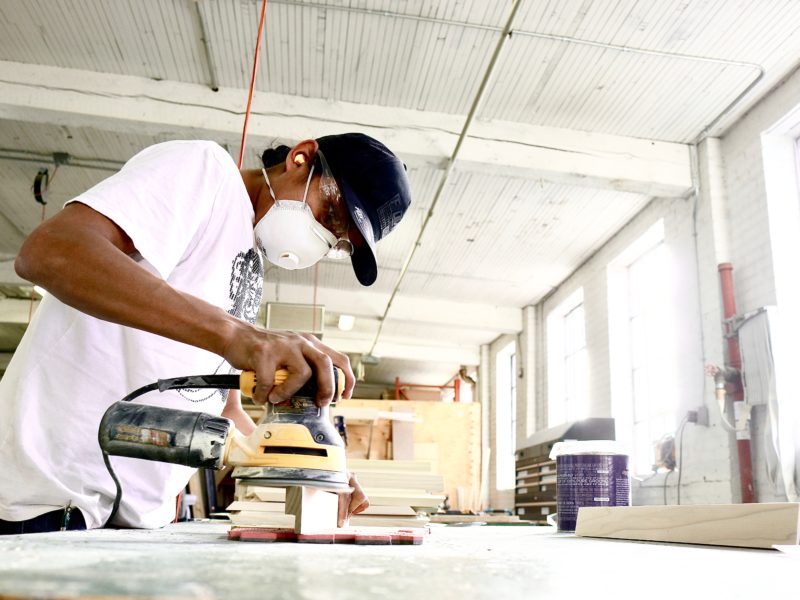Project Insights Report
More Than Just Numbers Revisited: Women in Engineering
More Than Just Numbers Revisited
 Executive Summary
Executive Summary
In 1992, the Canadian Committee on Women in Engineering published the More Than Just Numbers report, which identified the substantive barriers to women entering and succeeding in the engineering profession and detailed targets and recommendations for change. More recently, Engineers Canada issued its 30 by 30 call to action, aiming to raise the percentage of newly licensed engineers who identify as women to 30% by the year 2030. Despite these efforts, progress has been limited. In 2022, women comprised only 25% of undergraduate engineering enrolments, 15% of engineering professionals and 20% of newly licensed engineers. Women in the engineering workplace continue to face a “chilly climate” that includes gender bias in performance assessments and remuneration, misogynistic and sexist attitudes, and microaggressions.
The lack of diversity in engineering has ripple effects on the design of products, often with fatal consequences. For example, crash data between 1998 and 2008 in the US reveal that female drivers with seatbelts on are 47% more likely to be severely injured than male drivers—because the design of the female dummies used for crash testing did not take the biological differences between male and female bodies into account.
Further, diverse teams yield better performance. They are significantly more likely to deliver radical innovation and increased financial performance, and to avoid groupthink. There are strong moral and business imperatives to advance women’s participation in engineering.
This report reviews progress for women in engineering and the gaps that remain, and draws upon research and best practices to advance an evidence-based action plan.
Key Insights
In 2022, 25% of engineering undergraduate students were women, compared to 14% in 1992—a difference of only 11 percentage points in 30 years.
The issues today are quite similar to those identified in 1992—lack of role models, socialization of girls, men-centred curriculum and pedagogy, barriers to employment and advancement—and the chilly climate persists.
Statistical differences exist between disciplines: women make up more than half of all biosystems engineers (54.5%) but only 19.5% of electrical engineers. Statistical differences also exist in undergraduate enrolment of Canadian women between institutions, from 39% at the University of Toronto to 9.7% at Conestoga College.
 The Issue
The Issue
Engineering design is integral to our lives, affecting everything from the automobiles we drive to medical devices and the software and algorithms that power decision-making, and there is evidence that diversity in the profession has an impact on design.
Engineering is also a pathway to well-paid employment, and occupational segregation (e.g., the underrepresentation of women in STEM) has been a factor associated with the wage gap. Efforts to advance women in engineering have been underway for more than 30 years, but many of the barriers persist. Systems change is needed to address barriers at the societal, organizational and individual levels.

 What We Investigated
What We Investigated
This exploratory research assesses the ongoing gender disparity in Canada’s engineering profession and explores strategies to overcome the persistent barriers women face. It reviews progress since the Canadian Committee on Women in Engineering published its 1992 report, More Than Just Numbers, which first outlined women’s challenges in the field.
This report reviews the evidence from 1992 with respect to the inclusion of women in engineering education, leadership and the profession and compares it to today. It also provides an in-depth analysis of the barriers women in engineering face—again, comparing the analysis of 1992 to today.
Finally, it examines the strategies used to address the barriers, focusing on initiatives that promote equity, diversity and inclusion and career advancement. It concludes with recommendations for creating more inclusive environments, emphasizing the need for coordinated efforts by regulatory bodies, educational institutions, employers and professional associations to ensure that women enter the profession and are supported in their career growth and leadership development.
 What We’re Learning
What We’re Learning
The report documents changes with respect to women in engineering since the More Than Just Numbers report was written in 1992. While some progress has been made, it has been slower than many hoped.
This study helps us understand the complexity of moving the dial in terms of representation of women in engineering and the multi-layered factors that can drive or impede change. The report also explores 30 years of research on the barriers women in engineering face, and strategies aimed at advancing their participation. By including disaggregated data that explore different engineering disciplines, schools and regions, we lay a foundation for further investigation of what works. For example, some university programs have dramatically increased the representation of women through emphasizing leadership, setting targets, reconsidering curriculum and pedagogy, targeting outreach, providing wraparound supports and more. Some engineering disciplines have achieved gender parity; further work is needed to understand how and why, as the conventional explanations (e.g., “women are afraid of math”) are clearly not relevant.
Similarly, some engineering businesses have doubled down on attracting and retaining women, with measurable results, while others have neither changed their practices nor seen changes in the participation of women in decades. Understanding more about what works for whom is critical to developing and implementing a strategy with targets and accountability. Interventions should happen at the societal, organizational and individual levels.
Societal level: Addressing stereotypes, the lack of role models, and the socialization of girls is critical to shifting attitudes about the gendered nature of engineering. Clear targets and an overarching implementation plan with transparency and accountability are key. Government policies and regulators’ support are key. For example, government procurement policies have been impactful in civil engineering and infrastructure projects, where large contracts can influence hiring and subcontracting. Government funding for engineering research and education can also play a role by requiring reporting on disaggregated data and strategies. Accreditation bodies can include more emphasis on equity, diversity and inclusion in their standards. Provincial regulators, like Engineers and Geoscientists British Columbia, the Association of Professional Engineers and Geoscientists of Alberta and Professional Engineers Ontario, play an important role through professional practice guidelines that address equity, diversity and inclusion in relation to engineers’ responsibilities and ethical requirements.
Organizational level: The actions of employers and educational institutions matter. We need to double down on math and science education for girls in K–12 and address role models and career options so that girls do not self-select out of courses that lay the foundation for engineering. Postsecondary institutions need to set specific targets and address admissions processes and pedagogy. Programs and curricula that transcend a purely technical focus and stress human-centred values (e.g., how technological solutions can enhance quality of life) are more likely to attract and retain women. Within engineering, some disciplines (such as biosystems engineering) are more gender-balanced.
Employers must address barriers to hiring and retaining women engineers and create more inclusive workplaces. Some companies, for example, have targets and require balanced slates of short-listed candidates. Others prioritize hiring women and equity-deserving groups in co-op programs. Others are signatories to voluntary industry codes like 30 by 30 and the 50 – 30 Challenge.
Individual level: This requires a comprehensive approach that addresses the aspirations and career paths of women engineers, as well as the biases among educators, employer decision-makers and others. Training programs should aim to raise awareness about women’s structural barriers in entering and progressing within the field, including ways in which individuals’ biases can shape opportunities, hiring practices, promotion pathways and organizational policies.
 Why It Matters
Why It Matters
Underrepresentation of women in engineering has an impact on the design, utility and safety of products and services. It also affects wage gaps and pathways to leadership. While progress has been made over the last 30 years, many of the systemic barriers remain, which limit women’s participation and advancement in engineering.

State of Skills:
Unleashing AI into the Skills Development Ecosystem
FSC-supported AI tools have bolstered outcomes in skills matching, career development guidance, and recruitment. The overall effectiveness of these tools was underpinned by recognizing and mitigating the inherent bias and discrimination embedded into these technologies.
 What’s Next
What’s Next
Further work is underway to identify skills and training strategies to create more inclusive pathways for women in engineering education, workplaces, leadership and entrepreneurship.
More from FSC
DiversityLeads: Diverse representation in leadership - A review of 10 Canadian cities
Success@Work Skills: Preparing Workers and Systems to Navigate Change
Bridging the Gap: Developing a Flexible Learning Platform for Reskilling and Upskilling
Have questions about our work? Do you need access to a report in English or French? Please contact communications@fsc-ccf.ca.
How to Cite This Report
Cukier, W., Broughton, S., Noshiravani, R., Perruzza, S., Weissling, L. (2024) More Than Just Numbers Revisited: Women in Engineering. Toronto: Future Skills Centre. https://fsc-ccf.ca/research/women-in-engineering/
More Than Just Numbers Revisited: Women in Engineering is funded by the Government of Canada’s Future Skills Program. The opinions and interpretations in this publication are those of the author and do not necessarily reflect those of the Government of Canada.




